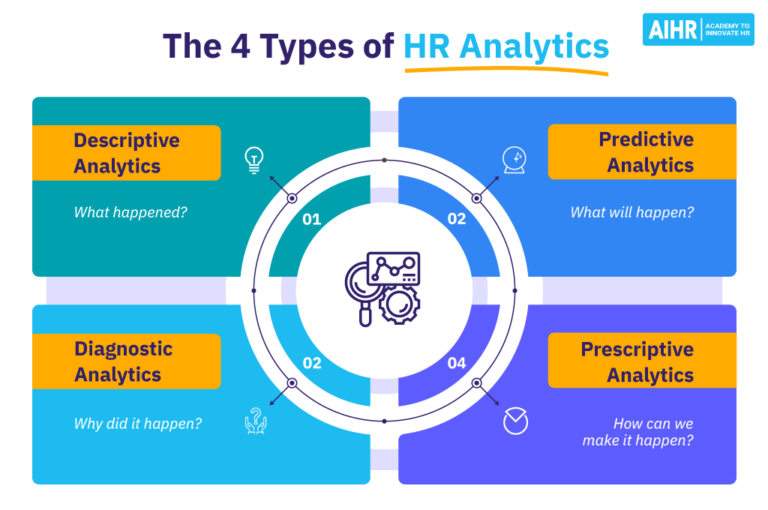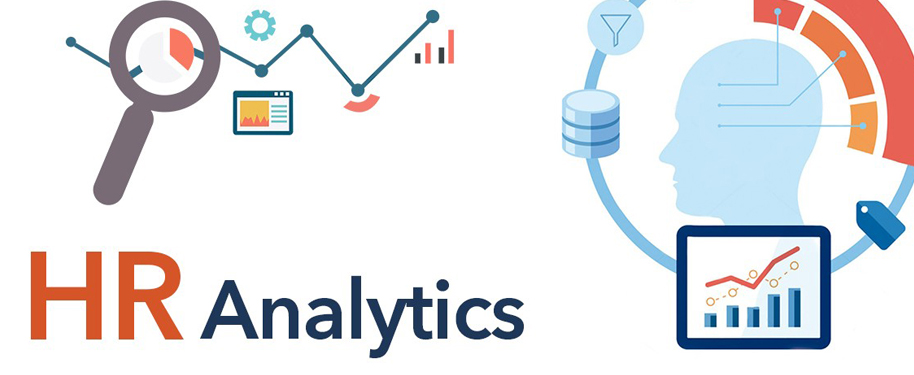HRIS system reporting and analytics for data-driven decision making in HR – HRIS system reporting and analytics for data-driven decision-making in HR: It’s the ultimate game-changer for HR professionals. Imagine a world where gut feelings are replaced by concrete data, where strategic decisions aren’t just educated guesses, but informed choices backed by powerful insights. This deep dive explores how HRIS reporting and analytics transform HR processes, revealing the secrets to unlocking the full potential of your workforce through data-driven strategies.
Get ready to ditch the guesswork and embrace the power of data!
We’ll uncover key performance indicators (KPIs), explore various report types, and delve into data visualization techniques that turn complex data into actionable insights. From recruitment and compensation to performance management and workforce planning, we’ll show you how to harness the power of your HRIS system to make smarter, faster, and more effective decisions. Prepare to revolutionize your HR approach and drive significant improvements in your organization’s overall success.
Introduction to HRIS System Reporting and Analytics: HRIS System Reporting And Analytics For Data-driven Decision Making In HR
HRIS system reporting and analytics are crucial for modern HR departments. They involve collecting, analyzing, and interpreting data from a Human Resource Information System (HRIS) to gain insights into workforce trends, employee performance, and the effectiveness of HR initiatives. This data-driven approach moves beyond gut feelings and allows for strategic, informed decisions that optimize HR processes and ultimately, the entire organization.Data-driven decision-making in HR is paramount in today’s competitive landscape.
Instead of relying on intuition or outdated methods, organizations can leverage the wealth of information within their HRIS to understand workforce dynamics, identify areas for improvement, and make informed decisions about recruitment, compensation, training, and employee engagement. This leads to improved efficiency, reduced costs, and a more engaged and productive workforce.
HRIS Reporting Improves HR Processes
Effective HRIS reporting can significantly enhance several core HR functions. For example, analyzing employee turnover data can pinpoint specific departments or roles experiencing high attrition rates. This allows HR to investigate the root causes, such as low compensation, lack of career development opportunities, or poor management, and implement targeted interventions to retain valuable employees. Similarly, tracking recruitment metrics, such as time-to-hire and cost-per-hire, can help optimize the recruitment process, making it faster and more efficient.
Analyzing employee training data can identify skill gaps and inform the development of targeted training programs that address specific needs, leading to a more skilled and productive workforce.
Benefits of Using an HRIS System for Data Analysis
Utilizing an HRIS for data analysis offers numerous advantages. First, it provides a centralized repository for all employee-related data, ensuring data accuracy and consistency. This eliminates the need to manually collect and compile data from disparate sources, saving time and reducing the risk of errors. Second, HRIS systems often include built-in reporting and analytics tools, allowing HR professionals to easily generate reports and visualize data through charts and graphs.
This makes it easier to identify trends and patterns, which might otherwise be missed when analyzing raw data. Third, advanced HRIS systems can provide predictive analytics capabilities, allowing HR to forecast future workforce needs and proactively address potential challenges. For instance, an HRIS might predict future skill gaps based on current employee demographics and planned retirements, enabling HR to implement proactive recruitment and training strategies.
Finally, robust HRIS reporting enhances compliance by providing the necessary data for audits and regulatory reporting, minimizing the risk of penalties and ensuring the organization adheres to relevant employment laws.
Key Metrics and Data Points in HRIS Reporting
HRIS systems are goldmines of data, offering invaluable insights into workforce trends and employee performance. Analyzing this data effectively, through the right metrics, is crucial for data-driven decision-making in HR. This section dives into five key performance indicators (KPIs) commonly used to track HR effectiveness and employee experience. Understanding these metrics allows HR professionals to identify areas for improvement and optimize HR strategies.
Effective HRIS reporting relies on selecting the right KPIs and understanding their implications. The following KPIs provide a strong foundation for evaluating various aspects of HR performance and employee well-being, ultimately leading to more strategic and effective HR practices.
Data-driven HR decisions rely heavily on robust HRIS system reporting and analytics. Understanding employee trends and performance requires sophisticated data analysis, much like the need for skilled teams in other departments. For instance, sales success hinges on effective CRM utilization, and training programs like those offered at effective CRM training programs for sales and customer service teams are crucial for maximizing ROI.
Ultimately, leveraging data insights, whether from HRIS or CRM systems, is key to optimizing organizational performance and strategic decision-making.
Five Key Performance Indicators (KPIs) in HRIS, HRIS system reporting and analytics for data-driven decision making in HR
Choosing the right KPIs is essential for accurate HR analytics. Below are five commonly used KPIs, their significance, formulas, and interpretations. These metrics provide a comprehensive overview of various HR functions, from recruitment to employee retention.
| KPI | Formula | Data Type | Interpretation |
|---|---|---|---|
| Employee Turnover Rate | (Number of Employees Who Left / Average Number of Employees) - 100 |
Percentage | Indicates the rate at which employees leave the company. High turnover suggests potential issues with employee satisfaction, compensation, or management. |
| Time-to-Hire | Number of Days from Job Posting to Offer Acceptance |
Number of Days | Measures the efficiency of the recruitment process. A shorter time-to-hire indicates a streamlined and effective recruitment strategy. |
| Employee Satisfaction Score (ESS) | Average Score from Employee Surveys |
Percentage or Score (e.g., 1-5 scale) | Reflects overall employee happiness and engagement. Low scores indicate potential areas needing improvement in employee relations, work environment, or compensation. |
| Cost per Hire | Total Cost of Hiring / Number of Hires |
Currency | Measures the financial investment required to fill open positions. High cost per hire may indicate inefficiencies in the recruitment process. |
| Training ROI (Return on Investment) | (Increased Revenue or Productivity - Training Costs) / Training Costs |
Percentage | Measures the effectiveness of training programs. A high ROI indicates that the training investment is yielding positive results. |
Visualization of Employee Turnover Rate and Employee Satisfaction Score
A scatter plot would effectively visualize the relationship between Employee Turnover Rate and Employee Satisfaction Score. The x-axis would represent the Employee Satisfaction Score (e.g., on a scale of 1-10), and the y-axis would represent the Employee Turnover Rate (percentage). Each data point would represent a department or team within the organization. A clear negative correlation would be expected – higher employee satisfaction scores should generally correlate with lower turnover rates.
Outliers, departments with unexpectedly high turnover despite high satisfaction, or vice versa, would highlight areas needing further investigation. This visualization would quickly identify departments or teams requiring focused attention to improve employee retention.
Types of HRIS Reports and Their Applications

HRIS systems are powerful tools, but their value lies in the insights gleaned from the data they collect. Understanding the different types of reports available and how to interpret them is crucial for making data-driven decisions that improve HR efficiency and employee experience. This section delves into various HRIS report categories, their uses, and the actionable insights they provide.
Recruitment Reports
Recruitment reports track the effectiveness of the hiring process from sourcing to onboarding. These reports provide a comprehensive view of time-to-hire, cost-per-hire, and source effectiveness. Analyzing these metrics allows HR to identify bottlenecks, optimize recruitment strategies, and ultimately reduce hiring costs while improving the quality of hires. For instance, a high cost-per-hire might indicate a need to explore more cost-effective recruitment channels, while a long time-to-hire could point to inefficiencies in the interview process.
- Primary Users: Recruiters, Hiring Managers, HR Directors
- Potential Benefits: Reduced time-to-hire, lower cost-per-hire, improved candidate quality, optimized recruitment strategies.
Compensation and Benefits Reports
These reports analyze salary data, benefits utilization, and compensation trends. They are vital for ensuring fair and competitive compensation packages, identifying pay gaps, and managing benefits costs effectively. For example, analyzing salary data by department and role can reveal potential pay inequities, prompting targeted adjustments. Similarly, analyzing benefits utilization can help HR optimize benefits offerings to better meet employee needs.
- Primary Users: Compensation Analysts, HR Managers, Finance Department
- Potential Benefits: Fair and competitive compensation, reduced employee turnover, improved employee satisfaction, optimized benefits costs.
Performance Management Reports
Performance management reports track employee performance, identify high-potential employees, and measure the effectiveness of performance improvement plans. These reports can reveal trends in employee performance, highlighting areas of strength and weakness within teams or departments. For instance, consistently low performance scores in a specific department might indicate a need for additional training or a review of management practices.
Identifying high-potential employees allows for proactive talent development and succession planning.
- Primary Users: HR Managers, Line Managers, Employees
- Potential Benefits: Improved employee performance, enhanced talent development, effective succession planning, increased employee engagement.
Employee Turnover Reports
Employee turnover reports track the rate of employee departures, identifying reasons for leaving and potential areas for improvement. High turnover rates can signal underlying issues such as low employee satisfaction, inadequate compensation, or poor management practices. Analyzing exit interview data alongside turnover rates allows HR to pinpoint specific causes and implement targeted solutions to reduce attrition. For example, a high number of employees leaving due to lack of career development opportunities might prompt the implementation of a robust mentorship program.
- Primary Users: HR Managers, Line Managers, Senior Management
- Potential Benefits: Reduced employee turnover, improved employee retention, lower recruitment costs, enhanced employee morale.
Training and Development Reports
These reports track employee participation in training programs, measure the effectiveness of training initiatives, and identify skill gaps within the organization. Analyzing training completion rates and subsequent performance improvements allows HR to evaluate the ROI of training programs and refine future training strategies. For instance, low completion rates might indicate the need for more engaging training materials or flexible delivery methods.
- Primary Users: L&D Managers, HR Managers, Line Managers
- Potential Benefits: Improved employee skills, increased productivity, enhanced employee engagement, higher employee retention.
Data Visualization Techniques for HR Analytics

Unlocking the true power of your HR data requires more than just collecting numbers; it demands insightful visualization. Effective data visualization transforms raw HR metrics into compelling narratives, revealing hidden trends and facilitating data-driven decision-making. By choosing the right visualization technique, HR professionals can communicate complex information clearly and concisely, influencing strategic HR initiatives and improving overall organizational performance.Data visualization techniques are essential tools for interpreting and communicating HR data.
Different techniques are suited to different types of data and analytical goals. Selecting the appropriate method ensures clarity and facilitates a deeper understanding of the information presented. Effective communication of HR insights through visualization directly impacts strategic decision-making within the organization.
Comparison of Data Visualization Techniques
Several visualization methods exist, each with its strengths and weaknesses. Bar charts effectively compare categories, while line charts showcase trends over time. Pie charts illustrate proportions of a whole, and scatter plots reveal correlations between variables. Dashboards combine multiple visualizations to provide a comprehensive overview. The choice depends heavily on the data and the message to be conveyed.
For example, a bar chart might be ideal for comparing employee turnover rates across different departments, while a line chart could track employee satisfaction scores over a year. A dashboard could combine both, along with other relevant metrics, for a holistic view of employee well-being and retention.
Choosing the Appropriate Visualization Method
The selection of a visualization method hinges on the type of data and the intended message. Categorical data (e.g., department, job title) lends itself to bar charts or pie charts. Numerical data (e.g., salary, tenure) is better represented using line charts, scatter plots, or histograms. The goal is to present the data in a way that is easily understandable and actionable.
For instance, to show the distribution of employee salaries, a histogram would be more appropriate than a bar chart. To compare the performance of different sales teams, a bar chart would be a better choice. Understanding the nature of the data and the desired outcome guides the selection process.
Communicating HR Data Insights Using Visualizations
Effective communication goes beyond simply creating a chart; it’s about crafting a narrative that resonates with the audience. Visualizations should be clear, concise, and easy to interpret. Avoid clutter and use appropriate labels and titles. Context is crucial; provide sufficient background information to help the audience understand the data’s significance. For example, when presenting employee satisfaction scores, include information about the survey methodology and response rate.
Highlight key findings and actionable insights to encourage engagement and drive decision-making. Color schemes should be consistent and easily distinguishable for those with color blindness.
Example HR Dashboard Design
This dashboard uses three visualization techniques to showcase key HR metrics. First, a bar chart displays employee turnover rates by department over the past year, highlighting areas needing attention. Second, a line chart tracks employee satisfaction scores over the same period, showing trends and potential correlations with turnover. Finally, a scatter plot illustrates the relationship between employee tenure and performance ratings, revealing potential patterns for talent development and retention strategies.
Each visualization is clearly labeled and provides context for interpretation. The dashboard offers a comprehensive overview of key HR metrics, enabling data-driven decision-making. The dashboard’s design prioritizes clarity and ease of understanding, using a consistent color palette and clear labels. Key performance indicators (KPIs) are prominently displayed, allowing HR professionals to quickly assess the overall health of the workforce.
The use of multiple visualization techniques allows for a more comprehensive and nuanced understanding of the data, compared to presenting each metric individually.
Challenges and Best Practices in HRIS Reporting and Analytics

Harnessing the power of HRIS data for strategic decision-making isn’t always smooth sailing. While HRIS systems offer incredible potential, realizing that potential requires navigating a range of challenges and implementing robust best practices. This section explores common hurdles and effective strategies for maximizing the value of your HR data.
Data Accuracy and Integrity
Maintaining data accuracy and integrity is paramount for reliable HR analytics. Inaccurate data leads to flawed insights and potentially detrimental decisions. Data entry errors, inconsistent data formats, and lack of data validation processes are common culprits. Best practices include implementing data validation rules within the HRIS system, regularly auditing data for inconsistencies, and providing comprehensive training to HR staff on accurate data entry procedures.
For instance, implementing automated checks to ensure consistency in date formats or job title entries can significantly reduce errors. Regular data cleansing and reconciliation with other systems also help maintain data integrity. Imagine a scenario where employee salary data is inconsistently recorded—some with currency symbols, some without. This can lead to inaccurate payroll calculations and skewed compensation analysis.
A robust data validation process would flag such inconsistencies and prevent them from propagating through the system.
Overcoming Data-Related Challenges in HR Analytics
Several obstacles can hinder effective HR analytics. Data silos, where data is scattered across different systems, make it difficult to gain a holistic view. Lack of data standardization, where different departments or systems use different terminology or data formats, further complicates analysis. Insufficient data skills within the HR team can also limit the effective use of analytics.
To overcome these, organizations should prioritize data integration efforts, establishing standardized data definitions and formats across the organization. Investing in training programs for HR staff to enhance their data analysis capabilities is crucial. Consider a scenario where recruitment data is stored in one system, performance data in another, and compensation data in yet another. Integrating these systems allows for comprehensive analysis of the entire employee lifecycle, revealing hidden correlations between recruitment strategies, performance, and compensation.
Data Security and Privacy in HR Analytics
HR data is highly sensitive, containing personal and confidential information about employees. Protecting this data is crucial for compliance with data privacy regulations like GDPR and CCPA. Security breaches can result in significant financial penalties and reputational damage. Best practices include implementing robust access control measures, encrypting sensitive data both in transit and at rest, and regularly auditing security protocols.
Employee consent should be obtained before using their data for analytical purposes, and data anonymization techniques should be employed wherever possible to protect employee privacy. A clear data governance policy, outlining data access permissions and security protocols, is essential. Failure to adhere to data privacy regulations can result in significant fines and loss of employee trust. For example, a data breach exposing employee salary information could severely damage employee morale and lead to legal repercussions.